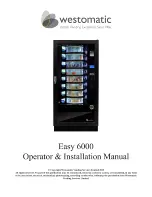
−
60
−
5. Material swells at the
sewn part.
6. Uneven material feed
Stitches gather at the center of the material.
The upper cloth and lower cloth shift in the
feeding direction.
The needle thread tension and bobbin
thread tension are too high.
The presser foot is defective.
The material flops.
The presser foot is defective.
The feed mechanism is defective.
Thread path has been poorly finished.
Feed timing is excessively advanced.
Thread enters in hole B in the bobinn case.
The presser foot pressure is too low.
Failed parallelism of the presser foot
Needle slot in the throat plate is too large.
The recess on the sole of the presser foot is
too large.
The needle has a blunt tip.
Presser foot pressure is too high.
The sole of the presser foot has been poorly
finished.
Failed inclination of the feed dog.
Height of the feed dog is excessive.
Finish the thread path to smoothen its surface.
Adjust the feed timing to the proper one.
Enter thread in hole A of the bobinn case.
Increase the presser foot pressure.
Re-attach the presser foot so that it closely fitted onto the throat
plate. or replace the presser foot with a new one.
Replace the throat plate with another throat plate which has a
smaller needle slot in accordance with the needle used and the
zigzag width specified.
Replace the presser foot with another one which has a smaller
recess or no recess.
Replace the needle with a new one.
Lower the presser foot pressure. ' If an aluminum presser bar.
that is optionally available. is used. only the presser foot pressure
can be lowered without reducing efficiency of feed.
Buff up the sole of the presser foot to enable the material to be
smoothly fed under the presser foot.
Adjust the inclination of the feed dog to the standard state (where
the feed dog is positioned with its front side lowered.)
Adjust the height of the feed dog to the standard height (0.8
mm) or slightly lower the feed dog below the standard height.
Trouble
Description
Cause 1
Cause 2
Corrective measure and adjusting procedure
A
B
















































